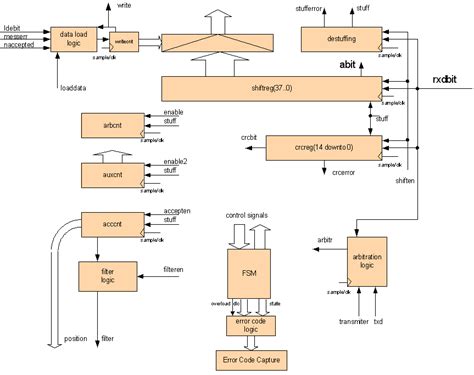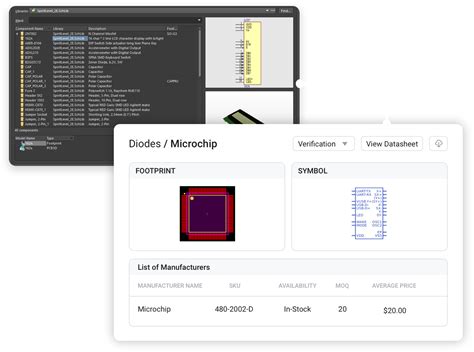Introduction to Altium and Industrial IoT
Altium Designer is a powerful electronic design automation software used for designing printed circuit boards (PCBs). It offers a comprehensive set of tools for schematic capture, PCB layout, routing, and manufacturing. In recent years, Altium has expanded its capabilities to support the growing field of industrial Internet of Things (IIoT) applications, particularly those leveraging cellular connectivity.
Industrial IoT refers to the use of smart sensors, actuators, and other devices to monitor and control industrial processes and equipment. By connecting these devices to the internet via cellular networks, companies can remotely monitor and optimize their operations, leading to increased efficiency, reduced downtime, and lower costs. Cellular connectivity offers several advantages for IIoT, including wide coverage, high reliability, and the ability to transmit large amounts of data.
Key Benefits of Cellular IIoT
- Wide coverage and mobility
- High reliability and security
- Ability to transmit large amounts of data
- Enables remote monitoring and control
- Facilitates predictive maintenance
Designing Cellular IIoT Devices with Altium
Altium Designer provides a comprehensive set of tools for designing cellular IIoT devices. The process typically involves the following steps:
-
Schematic Capture: Create a schematic diagram of the device, including the microcontroller, sensors, actuators, and cellular modem. Altium’s schematic editor allows you to easily place and connect components, and includes a large library of pre-built symbols for common parts.
-
PCB Layout: Once the schematic is complete, you can create a PCB layout using Altium’s layout tools. This involves placing components on the board, routing traces to connect them, and adding any necessary mounting holes, labels, or other features. Altium includes powerful auto-routing and constraint management tools to help streamline this process.
-
Cellular Modem Integration: To enable cellular connectivity, you’ll need to integrate a cellular modem into your design. Altium supports a wide range of cellular modems, including those based on LTE-M, NB-IoT, and 5G standards. You can either design your own modem circuit or use a pre-certified modem module to simplify the process.
-
Antenna Design: Proper antenna design is critical for ensuring reliable cellular connectivity. Altium includes tools for simulating and optimizing antenna performance, as well as a library of pre-built antenna designs for common frequency bands and form factors.
-
Manufacturing Preparation: Once your design is complete, Altium can help you prepare files for manufacturing, including Gerber files, drill files, and bill of materials (BOM). Altium also includes tools for design rule checking (DRC) and automatic generation of assembly drawings and other documentation.
Altium IIoT Design Checklist
- Identify key requirements (sensors, actuators, power, connectivity)
- Select appropriate microcontroller and cellular modem
- Create schematic diagram
- Design PCB layout
- Integrate cellular modem and antenna
- Perform design rule checks and simulations
- Generate manufacturing files and documentation

Cellular Connectivity Options for IIoT
There are several cellular connectivity options available for IIoT applications, each with its own advantages and trade-offs. The most common options include:
LTE-M
LTE-M (Long-Term Evolution for Machines) is a low-power wide-area network (LPWAN) technology designed for IoT applications. It offers lower power consumption and longer battery life compared to traditional LTE, while still providing high data rates and low latency.
| Feature | Specification |
|---|---|
| Frequency Band | 700-900 MHz |
| Bandwidth | 1.4 MHz |
| Data Rate | Up to 1 Mbps |
| Range | Up to 10 km |
| Battery Life | Up to 10 years |
NB-IoT
NB-IoT (Narrowband IoT) is another LPWAN technology designed for low-power, low-cost IoT devices. It operates in licensed frequency bands and offers even lower power consumption and longer range than LTE-M, but with lower data rates.
| Feature | Specification |
|---|---|
| Frequency Band | 700-900 MHz |
| Bandwidth | 200 kHz |
| Data Rate | Up to 250 kbps |
| Range | Up to 15 km |
| Battery Life | Up to 10 years |
5G
5G is the latest generation of cellular technology, offering ultra-high speed, low latency, and massive device connectivity. While 5G is still in the early stages of deployment for IIoT applications, it has the potential to enable new use cases such as real-time control, video streaming, and edge computing.
| Feature | Specification |
|---|---|
| Frequency Band | Sub-6 GHz, mmWave |
| Bandwidth | Up to 100 MHz |
| Data Rate | Up to 10 Gbps |
| Latency | < 1 ms |
| Device Density | Up to 1M per km² |

Altium IIoT Design Examples
Here are a few examples of IIoT devices that can be designed using Altium:
Smart Factory Sensor
A wireless sensor node for monitoring industrial equipment in a smart factory. The device includes a microcontroller, sensors (e.g. temperature, vibration), and an LTE-M modem for connectivity.
Agricultural Monitoring System
A system of wireless sensors and actuators for monitoring and controlling agricultural processes such as irrigation, fertilization, and pest control. The devices use NB-IoT for long-range, low-power connectivity.
Autonomous Mobile Robot
An autonomous mobile robot for material handling in warehouses and factories. The robot includes a high-performance processor, cameras and other sensors, and a 5G modem for low-latency connectivity to a central control system.

FAQ
What is Altium Designer?
Altium Designer is a software tool used for designing printed circuit boards (PCBs). It includes features for schematic capture, PCB layout, routing, simulation, and manufacturing preparation.
What is cellular IIoT?
Cellular IIoT refers to the use of cellular networks (such as LTE-M, NB-IoT, or 5G) to connect industrial IoT devices such as sensors, actuators, and controllers. This allows for remote monitoring and control of industrial processes and equipment.
What are the benefits of using cellular for IIoT?
Cellular connectivity offers several benefits for IIoT applications, including:
- Wide coverage area, enabling connectivity in remote locations
- High reliability and security compared to other wireless technologies
- Ability to transmit large amounts of data over long distances
- Support for low-power, long-battery-life devices (with LTE-M and NB-IoT)
- Low latency and high device density (with 5G)
How does Altium support cellular IIoT design?
Altium Designer includes several features to support the design of cellular IIoT devices, such as:
- Library of pre-built components and reference designs for common IIoT applications
- Tools for integrating cellular modems and antennas into PCB designs
- Simulation and analysis tools for optimizing device performance and connectivity
- Manufacturing preparation tools for generating files and documentation
What are some common use cases for cellular IIoT?
Some common use cases for cellular IIoT include:
- Remote monitoring and control of industrial equipment and processes
- Asset tracking and fleet management
- Smart agriculture and environmental monitoring
- Smart cities and infrastructure monitoring
- Healthcare and medical device connectivity

No responses yet